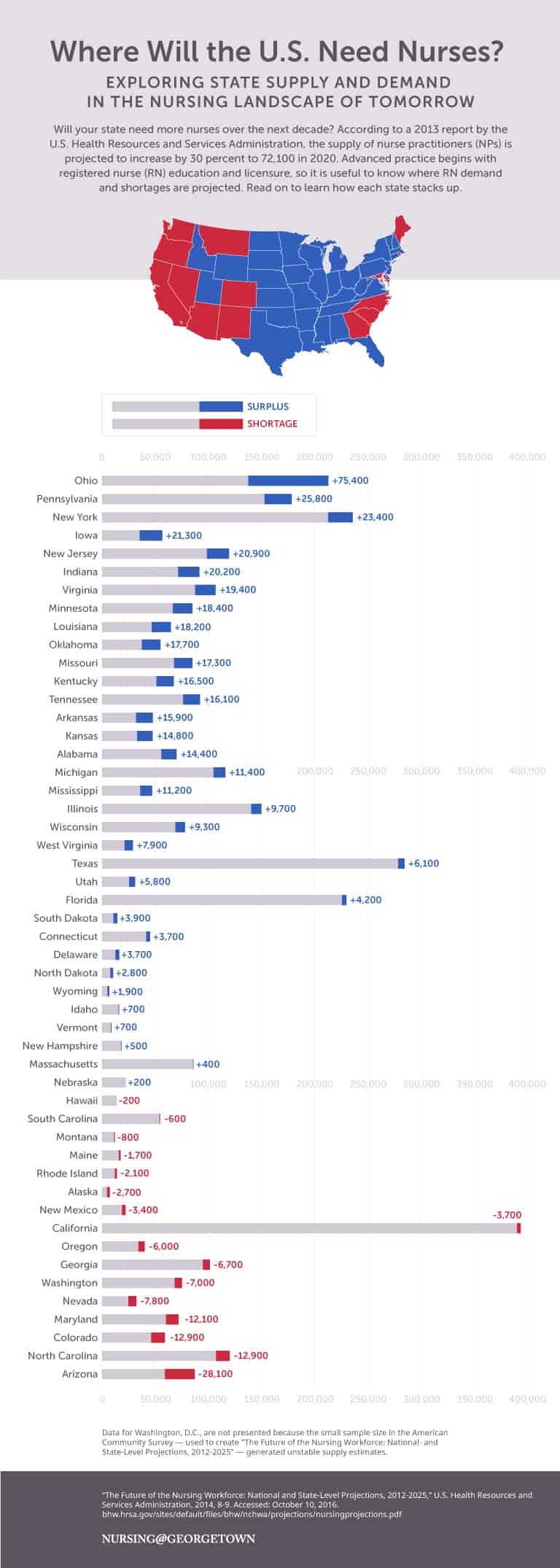NURSING@GEORGETOWN
The demand for health care professionals — especially those who work in primary care — is predicted to increase through 2020. This is due in large part to an aging baby boomer generation along with overall population growth. As the single largest health profession in the nation, nurses play a vital role in meeting that demand. With their clinical knowledge and skills to provide direct patient care, nurse practitioners (NPs) are uniquely positioned to help fill the shortage of primary health care providers.
According to a 2013 report from the U.S. Health Resources and Services Administration (HRSA), the number of primary care NPs is projected to increase by 30 percent, from 55,400 in 2010 to 72,100 in 2020. All advanced practice nurses, including NPs, must first receive the education and licensure to be a registered nurse (RN). Since this is the case, it is important understand the state-level demand and projected shortages for RNs.
Since 2000, the United States has more than doubled the number of RNs educated annually. In some states this means that the number of RNs is expected to exceed demand. Other states are still expected to experience nursing shortages. The following infographic — based on data from the 2014 HRSA report, “The Future of the Nursing Workforce: National- and State-Level Projections, 2012-2025 — details the states that may, and may not, need more nurses over the next 10 years.
You can learn more from the infographic below that was created by Nursing@Georgetown’s online family nurse practitioner program.
Nursing@Georgetown is the innovative online Master of Science degree in Nursing program from Georgetown University School of Nursing & Health Studies.




 Janine Anthes
Janine Anthes